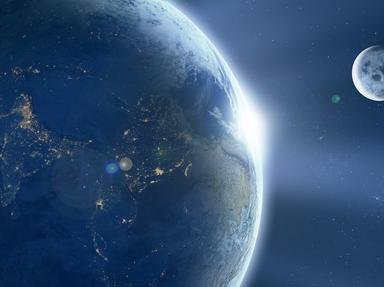Quiz Answer Key and Fun Facts
1. Neptune was discovered by Johann Galle and Urbain Le Verrier on September 23rd, 1846. Only seventeen days later, William Lassell discovered its first (and largest) moon. What is its name?
2. A second moon was not discovered around Neptune until over a century later. Which Dutch astronomer, whose name also adorns a belt (containing three dwarf planets) beyond Neptune, discovered Nereid in 1949?
3. Larissa, the third Neptunian moon to be discovered, was observed while four astronomers (Reitsema, Hubbard, Lebofsky and Tholen) were looking for a ring around Neptune.
4. No further Neptunian moons were discovered until the 1989 flyby of a spacecraft that was launched from Earth on August 20th, 1977. Which space probe was it?
5. The arrival of the space probe in 1989 confirmed the existence of Larissa, as well as five other inner moons. Which of these inner moons, named for the freshwater nymphs of Greek mythology, is the innermost moon of Neptune?
6. Which of Neptune's other inner moons, named for an early Greek god of 'elusive sea change', is the second largest Neptunian moon?
7. All of Neptune's inner moons are regular moons - relatively close, following a prograde orbit, and with little to no orbital eccentricity.
8. Beyond the orbit of Nereid there are five more irregular moons and all five of these moons have retrograde orbits.
9. Which of the five outer moons, suggested to have once been part of the moon Nereid, is the largest with a diameter of 62 kilometres?
10. Neso, the outermost Neptunian moon, holds a rather impressive record. What is it?
Source: Author
reedy
This quiz was reviewed by FunTrivia editor
rossian before going online.
Any errors found in FunTrivia content are routinely corrected through our feedback system.
